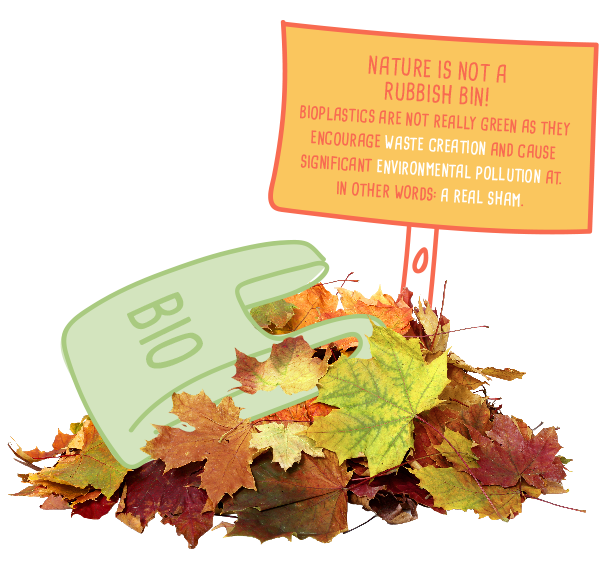
PLASTIC IS RE- USABLE!

PLASTIC SHOULD
NOT
DEGRADE
Would you really want your glasses to fall apart or your laptop to dissolve after a couple of months? In many areas of application, the degradation of plastic is actually not desirable. On the contrary: we want these products to last as long as possible.

For packaging, on the other hand, the trend is tilting towards biodegradable plastic that dissolves quickly. But is this really so useful?

BIOPLASTICS IN
PACKAGING –
SOLUTION OR EMPTY
PROMISE?
Bioplastics are advertised using the claim that they degrade within a few weeks. In reality they actually degrade extremely slowly and encourage people to carelessly dispose of them in the environment.


Bioplastics are claimed to degrade within a few weeks. Even a natural product is not capable of doing that! Leaves for instance need approximately 12 to 36 months to degrade. This is because degradation is facilitated by high temperatures, high humidity, a suitable pH-value and a continuous oxygen supply. These are circumstances that cannot be found on a forest floor or a landfill.

BIOPLASTICS ARE
A WASTE OF
RESOURCES
Bioplastics don’t belong in the recycling waste section as the material cannot be recycled. Even small amounts disrupt the recycling
cycle or cause a massive loss of quality, up to the point of completely useless recycled material.
Bioplastics don’t belong in the organic waste section either. Because despite ideal circumstances, they degrade far too slowly in that
bin and will have to be sorted out in the end which is related to significant extra work.
Bioplastics belong in the general waste bin and can only be processed energetically, which means they have to be incinerated. What a waste!

THE
DISPOSAL PROBLEM:
AND PERPETUALLY
THE WASTE FERMENTS!
Did you know that landfills are not meant for the disposed of waste to degrade? During the decomposition process, greenhouse gases are released which negatively impact the climate. Hence, decomposition is to be avoided. Especially waste in the lower layers of a landfill doesn’t decompose. The reason for this is the low oxygen supply in these layers. Even natural products like food stuff can be found in landfills in their original condition after many years. Oxygen is required for the degradation of a product and it is deliberately scarce on landfills to avoid greenhouse gas emissions.

WHAT IS THE
MAIN CAUSE OF
MICROPLASTICS?
The main source of microplastics in the environment isn’t the degradation of plastic waste, but the tire wear of cars, trucks and motorcycles.


Overall, a car tire has a life duration of 4 years or approximately 40,000 km. At the end of its usage time, the tire will be 1 to 1.5 kg lighter than at the beginning, dependent on the weight of the vehicle, road conditions and driving behavior. The wear of the tire will then end up as microplastics in the environment.

Has anyone ever told you that we consume microplastics the size of a credit card per week? Complete nonsense! Independent studies prove that it takes more than 20,000 years until a human being could ever take in such an amount of microplastics.


